When choosing the right ground cover to use around pavers or flagstone, you want them to meet a few criteria:
- Look for plants that are tough so you don’t have to tiptoe around them.
- Choose short plants that won’t obstruct your path, and plants that are suited to the area’s light exposure (is the area sunny or shady).
- Find plants that spread to fill the space around them make growing plants between pavers easier.
And living in California, drought is also a major concern. However, it’s very possible to grow a gorgeous, water-wise garden. You can find drought tolerant plants for nearly any situation, including heat-loving ground cover plants and ground covers that withstand drought.
The best drought tolerant ground covers share several common characteristics. For example, drought-tolerant plants often have small or narrow leaves with a smaller surface area and reduced moisture loss. Similarly, plants with leaves that are waxy, curled or deeply veined retain moisture. Many drought tolerant plants are covered with fine grey or white hairs, which help the plant reflect heat.
Here are a few great options:
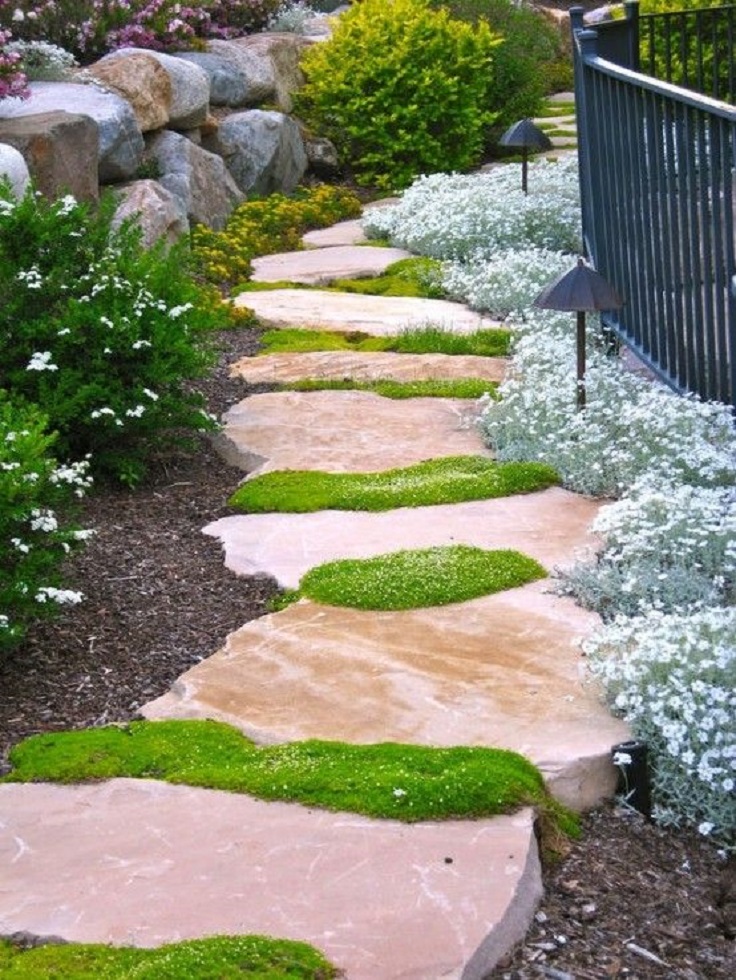
Irish Moss: Irish moss adds soft, spongy texture to paths in shady areas. Only a couple of inches tall, it doesn’t create an obstruction. It’s usually sold in flats like sod. Just cut it to fit and lay it where you want it to grow. It is sometimes sold as Scottish moss.
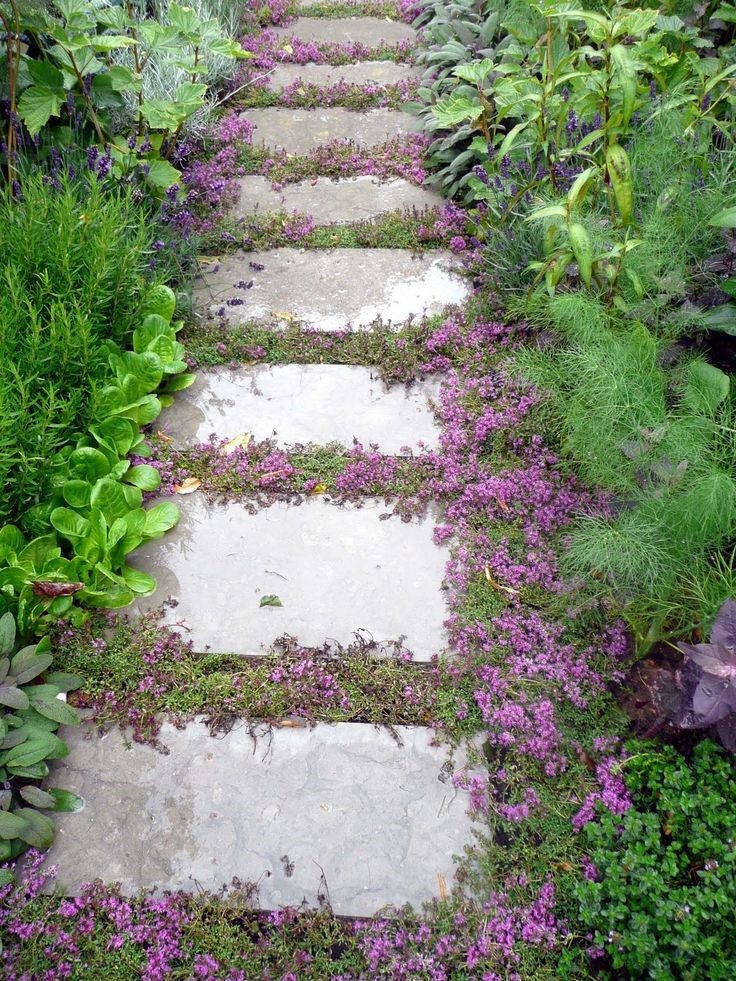
Creeping Thyme: .Creeping Thyme grows only an inch or two tall, and you’ll enjoy its pleasant fragrance. You can plant it in the sun, where it grows flat, or in the shade where it forms little hills. It bounces back after short periods of dry weather, but you’ll need to water it if the dry weather lasts very long.
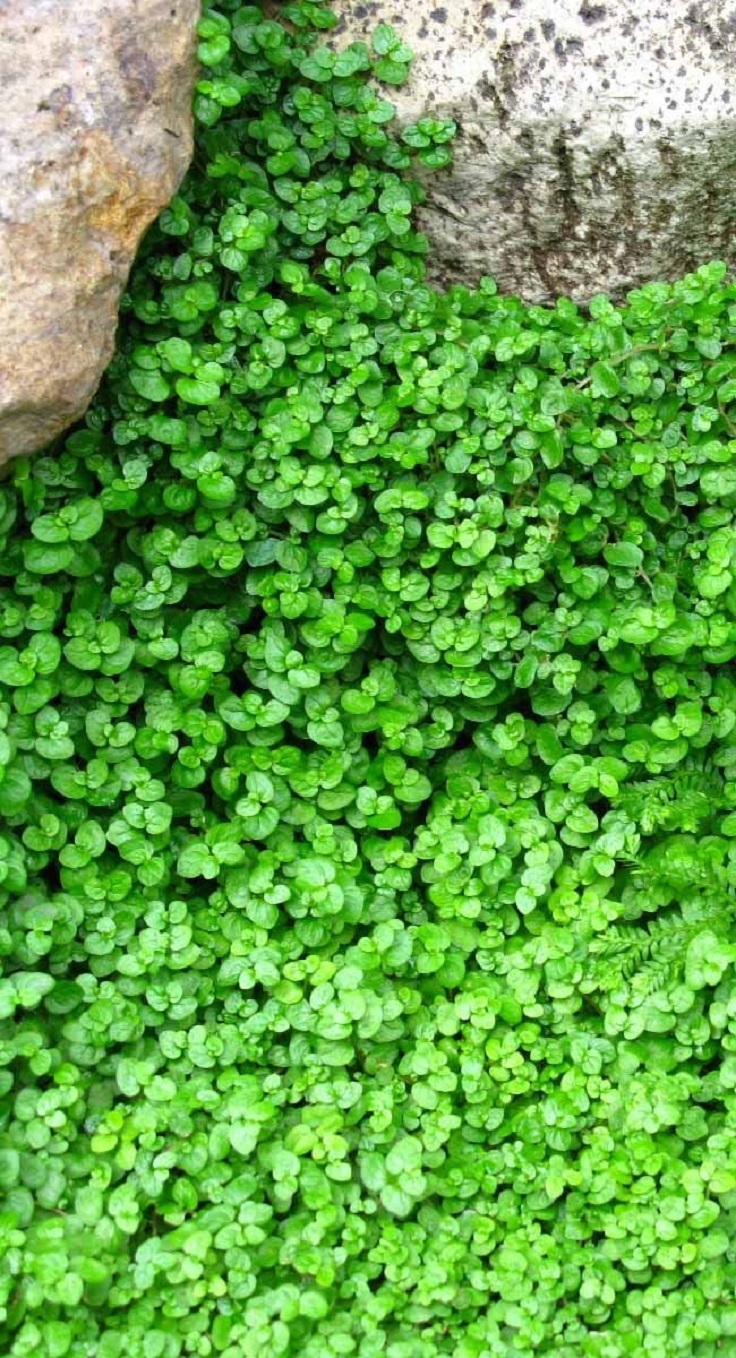
Baby’s Tears: Baby’s tears is another selection for shady locations. They are often sold as houseplants, but they also make wonderful little plants to grow within pavers. It isn’t for everyone because it only grows in USDA zones 9 and warmer. The pretty foliage forms mounds about 5 inches tall.
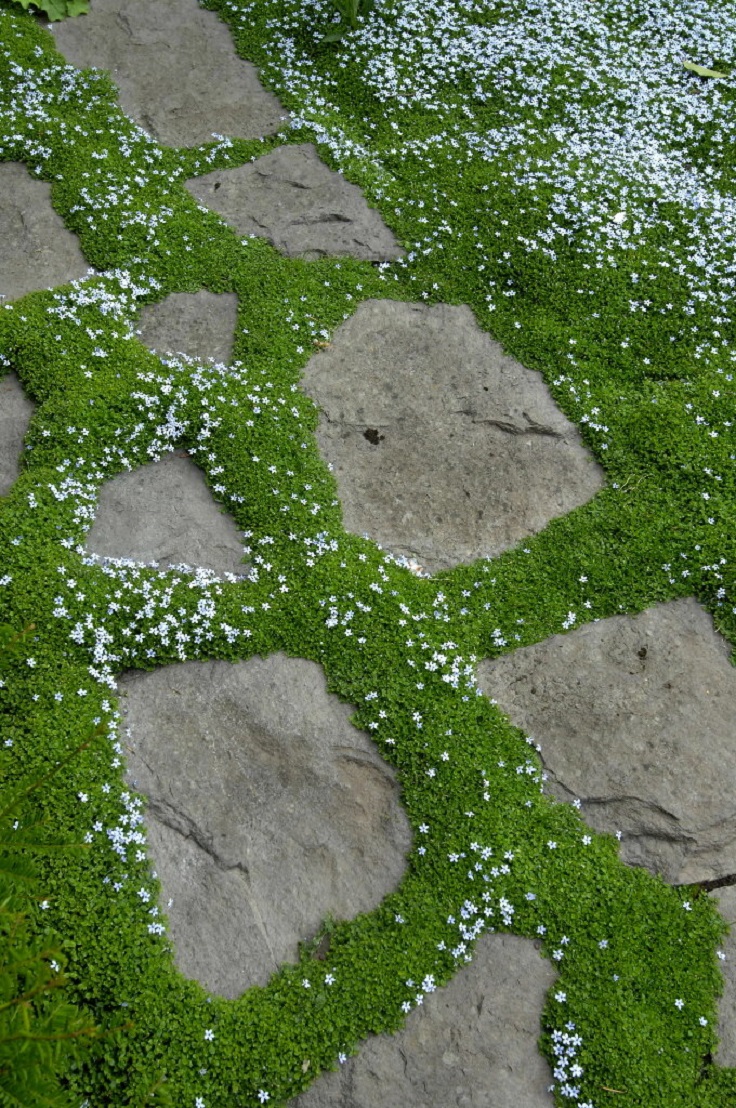
Blue Star Creeper: Creepers are perfect as a lawn substitute, excellent between stepping stones, under roses, around ponds, patios and decks. Isotoma fluviatilis is a show stopper in a topiary and is amazing over flower bulbs. Super easy to grow and can bloom spring through summer if conditions are right.
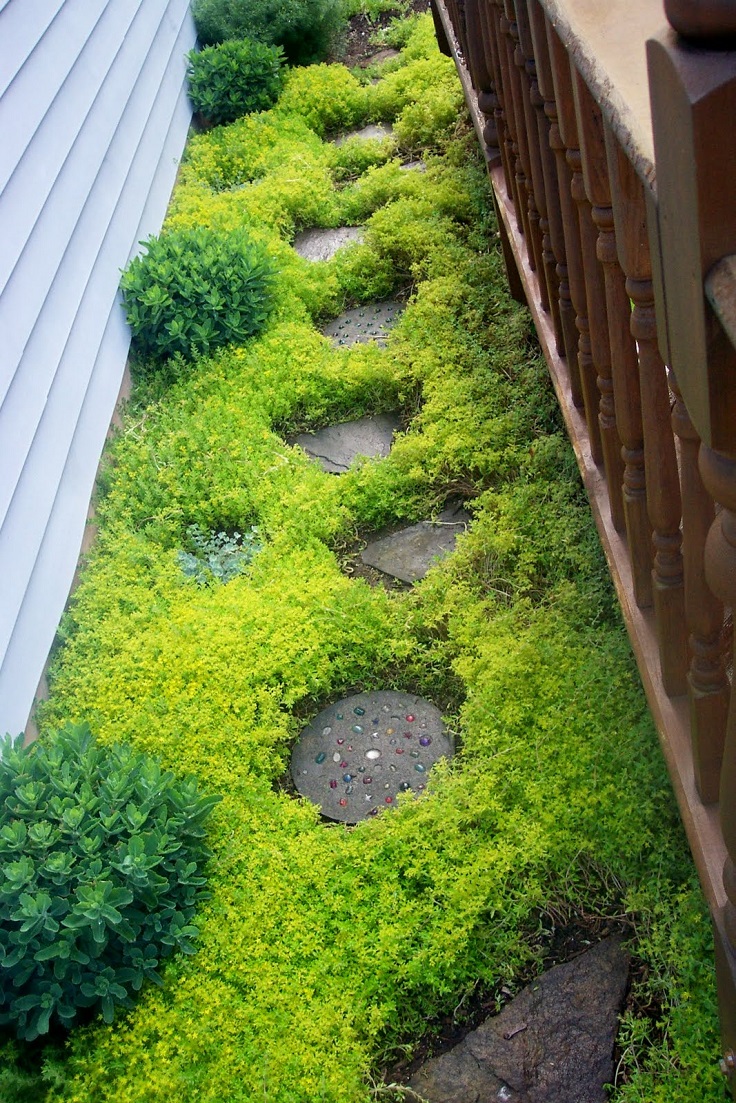
Creeping Sedum: Sedums do their best in lean soils and not much water – because in those conditions the weeds DON’T do well. In other words, in the world of groundcovers it’s all about the competition – can a plant out-compete the weeds or not? So first, making your site inhospitable to weeds before planting gives sedums greatly reduces the long-term maintenance from then on (less weeding).
